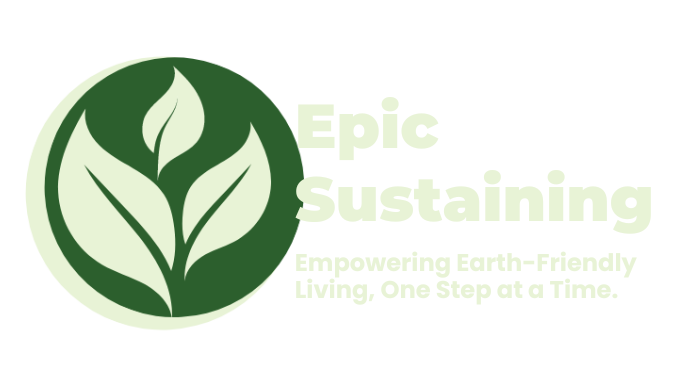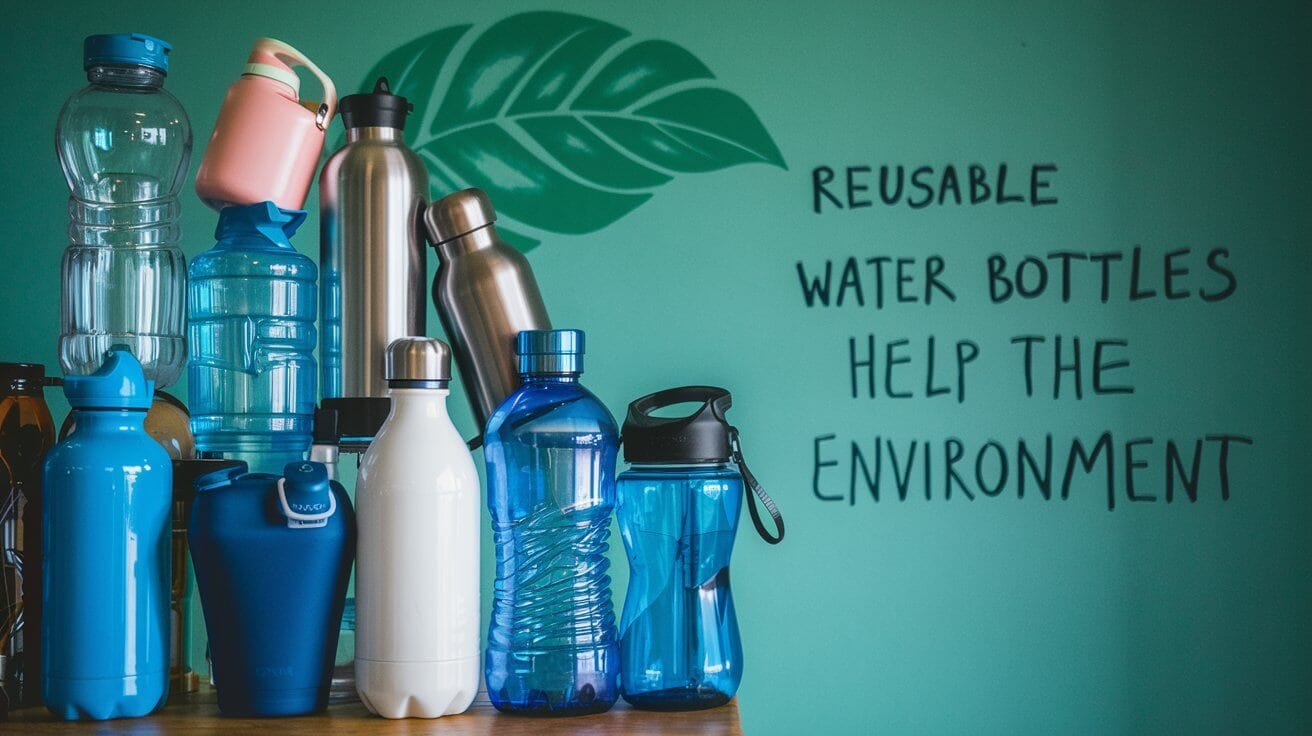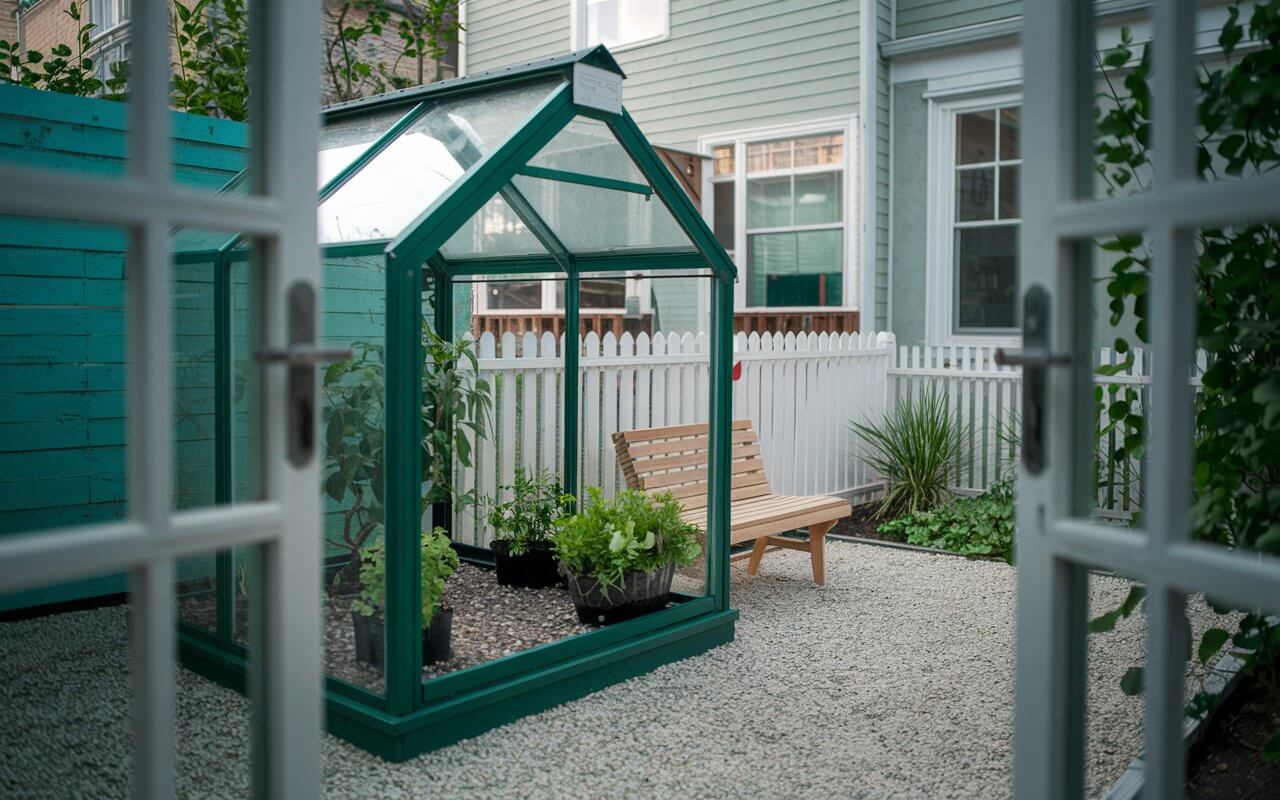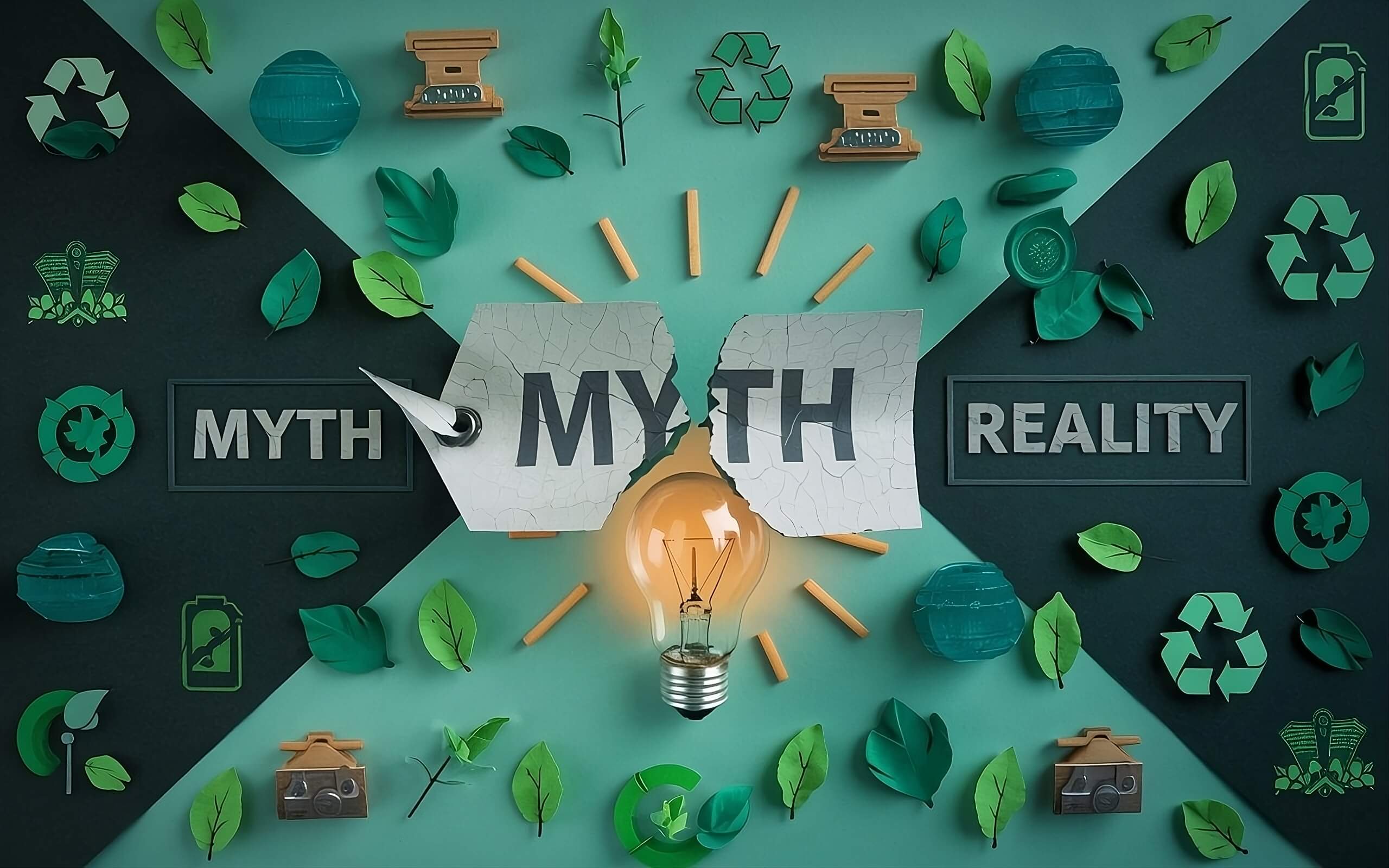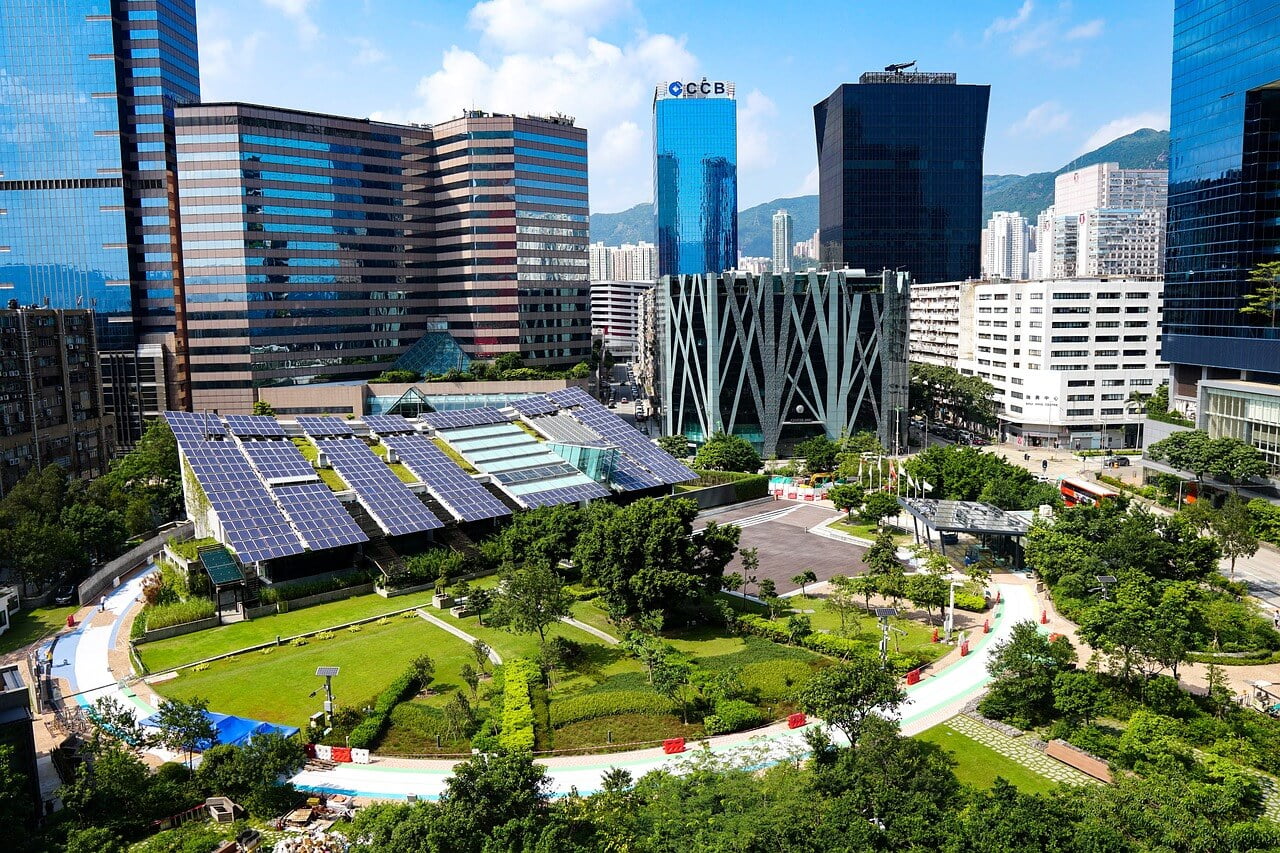Imagine slashing your carbon footprint, saving money, and living a more fulfilling life, all while barely breaking a sweat.
Intrigued?
You should be! Sustainable living isn’t just for eco-warriors, it’s a game-changer for anyone who wants to make a real difference.
Discover how easy sustainable living tips can revolutionize your lifestyle and help you become an environmental hero.
Ready to take action? Let’s dive into 16 simple ways to kickstart your sustainable living journey!
Key Takeaways:
- Sustainable living reduces your environmental impact and often saves money.
- Small, consistent changes in daily habits can lead to significant positive outcomes.
- These 16 tips cover various aspects of life, from home energy use to shopping habits.
- Anyone can start living more sustainably, regardless of their current lifestyle.
- Embracing sustainable practices often leads to improved health and well-being.
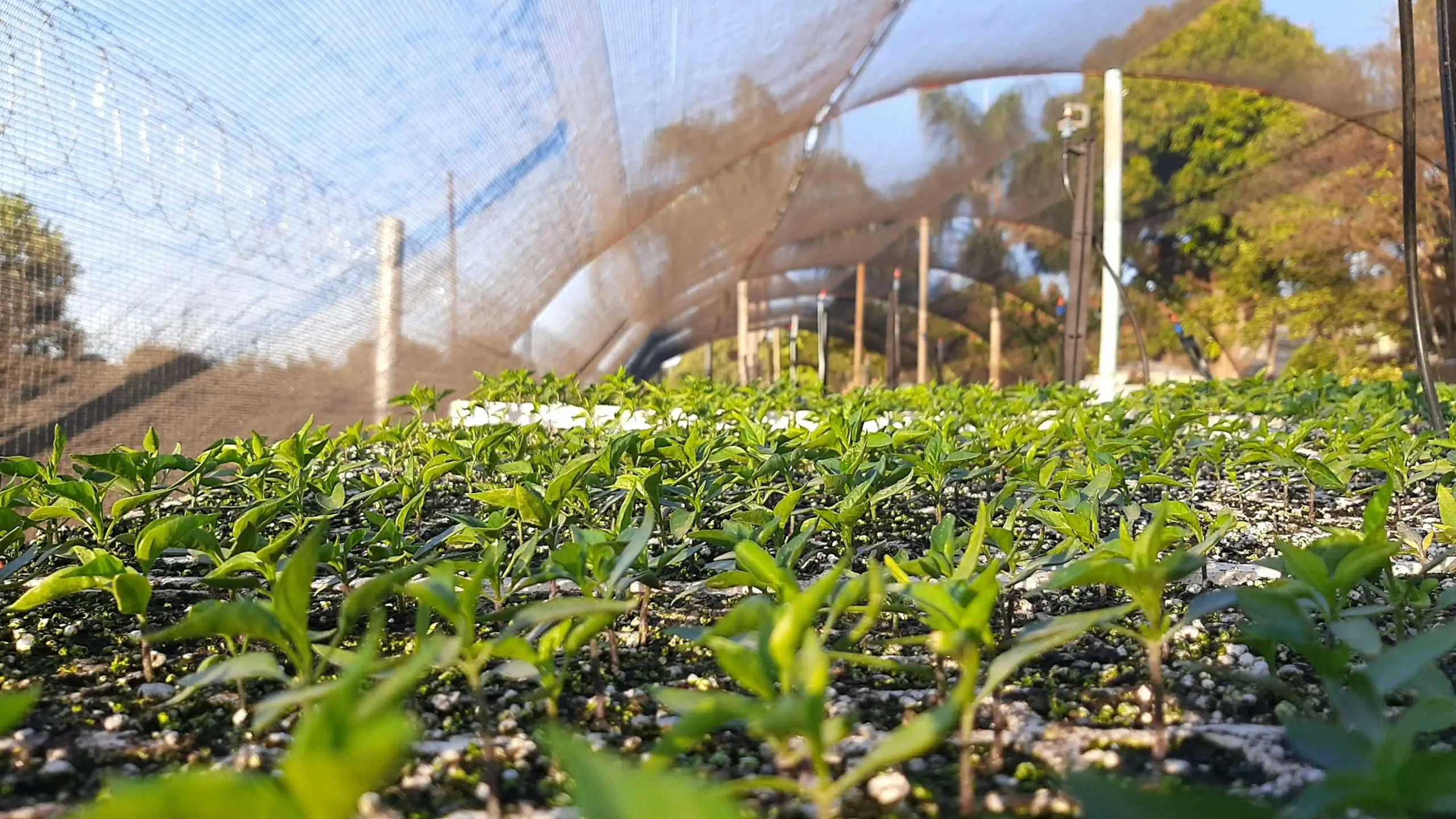
Page Contents
ToggleTake Sarah, for example. A year ago, she was just like you, eager to make a difference but unsure where to start.
She began with simple steps: using a reusable water bottle, shopping with cloth bags, and turning off lights when leaving a room.
Fast forward to today, and Sarah has reduced her household waste by 50%, lowered her energy bills by 30%, and inspired her entire office to adopt more sustainable practices.
1. Rethink Your Purchases and Embrace Minimalism
In a world that constantly bombards us with ads and “must-have” products, embracing minimalism can feel like a superpower.
It’s not about living with nothing; it’s about living with intention. Let’s break it down:
Understanding Minimalism
Minimalism isn’t about depriving yourself. It’s about focusing on what truly adds value to your life. Here’s the core idea:
- Buy less, choose well, and make it last.
- Focus on experiences rather than possessions.
- Reduce clutter to reduce stress and increase focus.
Intentional Buying
Before you click that “Buy Now” button, ask yourself:
- Do I really need this?
- Will it add value to my life?
- Can I borrow or rent it instead?
Try the 30-day rule: If you want something non-essential, wait 30 days before buying it. Often, you’ll find the urge passes, saving you money and reducing unnecessary consumption.
Decluttering and Reducing Possessions
Time for some spring cleaning (even if it’s not spring):
- Start with one room or category (like clothes).
- Sort items into keep, donate, and recycle piles.
- Be honest: If you haven’t used it in a year, do you really need it?
Pro tip: For every new item you bring in, remove one old item. This helps maintain balance and prevents clutter buildup.
Financial Minimalism
Embracing minimalism can fatten your wallet too:
- Create a budget focusing on essentials.
- Cut subscriptions you rarely use.
- Save for experiences rather than things.
Leaf Van Boven’s research at the University of Colorado Boulder shows that spending money on experiences leads to greater and more lasting happiness compared to purchasing material goods.
His studies suggest that instead of buying the newest gadget, you may find more joy and fulfillment in planning an adventure or attending an event with loved ones, as experiences create lasting memories and strengthen social bonds.
Minimalist Wardrobe
Enter the world of capsule wardrobes:
- Choose versatile, high-quality pieces that mix and match.
- Stick to a color palette for easy coordination.
- Aim for about 30-40 pieces total (including shoes and accessories).
Remember, the most sustainable clothing is what you already own. Take care of your clothes, repair when needed, and they’ll serve you well for years.
2. Ditch Single-Use Products and Transition to Reusables
Ah, single-use products, the bane of our planet’s existence.
They’re convenient, sure, but at what cost?
Let’s dive into how we can break up with single-use items and start a beautiful relationship with reusables.
In the Kitchen
Your kitchen is probably Ground Zero for single-use items. Let’s change that:
- Swap plastic wrap for reusable food covers: Beeswax wraps or silicone lids are game-changers. They’re washable, reusable, and often work better than plastic wrap.
- Ditch paper towels: Invest in a set of cloth napkins and reusable kitchen towels. Many families use the same cloth napkins for years without issue.
- Upgrade your food storage: Replace disposable plastic containers with glass or stainless steel. They last longer, don’t absorb odors, and are often microwave and dishwasher-safe.
Daily Essentials
Small changes in your daily routine can make a big difference:
- Straws: If you must use a straw, opt for reusable ones made of stainless steel, glass, or even pasta!
- Coffee filters: A reusable coffee filter can save hundreds of paper filters from the landfill each year.
- Water bottles: A high-quality reusable water bottle can last for years and save you money on bottled water.
- Grocery bags: Keep reusable bags in your car so you’re never caught without them.
Personal Care Items
Your bathroom routine could use an eco-makeover too:
- Cotton rounds: Switch to washable, organic cotton rounds for your skincare routine.
- Menstrual products: Consider reusable options like menstrual cups, cloth pads, or period panties. They’re not only eco-friendly but often more comfortable too!
Cleaning and Laundry
Clean green with these swaps:
- Mop pads: Use washable mop pads instead of disposable ones.
- Dryer balls: Wool dryer balls can replace single-use dryer sheets and last for years.
- Cleaning tools: Opt for compostable sponges or natural fiber brushes over synthetic options.
The Impact of Going Reusable
Let’s crunch some numbers:
| Single-Use Item | Reusable Alternative | Potential Yearly Savings |
|---|---|---|
| Paper towels | Cloth towels | 5-6 rolls (130 sheets each) |
| Plastic water bottles | Reusable bottle | 167 bottles per person |
| Disposable coffee cups | Reusable mug | 500 cups |
| Plastic grocery bags | Reusable bags | 300-700 bags |
According to the Ellen MacArthur Foundation, by 2050, there could be more plastic than fish in the world’s oceans. But here’s the good news: by making these simple swaps, you’re part of the solution.
3. Start a Home Garden or Buy Local Produce
Ever bitten into a tomato so fresh it tastes like sunshine?
That’s the magic of home-grown or locally sourced produce.
Not only does it taste better, but it’s also a powerful way to reduce your carbon footprint and connect with your food. Let’s dig in!
Benefits of Growing Your Own Food
- Nutrient-Rich Harvests: Home-grown produce is typically more nutritious. A study in the Journal of Agricultural and Food Chemistry found that home-grown tomatoes had 30% more vitamin C than supermarket tomatoes.
- Minimized Environmental Impact: The average meal in the United States travels 1,500 miles from farm to plate. Growing your own food or buying locally can dramatically reduce these “food miles”.
- Pesticide-Free: You control what goes into your food. No mystery chemicals here!
Getting Started with a Home Garden
Don’t worry, you don’t need a green thumb to start:
- Assess Your Space: Even a sunny windowsill can host a herb garden. For larger spaces, consider raised beds or container gardening.
- Choose Native or Drought-Tolerant Plants: These require less maintenance and water. Check with your local extension office for recommendations.
- Start Small: Begin with easy-to-grow herbs like basil, mint, or chives. Gradually expand to vegetables like tomatoes, lettuce, or peppers.
- Compost: Turn kitchen scraps into black gold for your garden. It’s like magic, but smellier!
Embracing Local and Organic Produce
If gardening isn’t your thing, no worries! Buying local is the next best option:
- Visit Farmers Markets: They’re not just for hipsters anymore! You’ll find fresh, seasonal produce and support local farmers.
- Join a CSA (Community Supported Agriculture): Get a box of fresh, local produce regularly. It’s like a surprise party for your taste buds every week!
- Look for “Locally Grown” Labels: Many supermarkets now highlight local produce.
The Impact of Local Food
Check out these juicy stats:
| Action | Environmental Impact |
|---|---|
| Growing your own food | Can reduce your carbon footprint by up to 68 lbs of CO2 per year |
| Buying local produce | Reduces transportation emissions by up to 89% compared to conventional food systems |
| Supporting organic farming | Increases soil carbon storage by 3.5 metric tons per hectare |
Practical Tips for Beginners
- Start with Herbs: They’re easy to grow and can save you money on store-bought herbs.
- Vertical Gardening: Short on space? Grow up, not out! Use trellises or hanging planters.
- Companion Planting: Some plants grow better together. For example, basil can improve the flavor of tomatoes when planted nearby.
- Get the Kids Involved: Gardening is a great way to teach kids about where food comes from and get them excited about eating vegetables.
Remember, whether you’re growing your own food or buying locally, you’re not just nourishing your body, you’re nurturing the planet too.
4. Begin Composting: Turn Waste into Gold
Imagine turning your banana peels and coffee grounds into nutritious food for your garden.
That’s not alchemy, it’s composting!
This magical process not only reduces waste but also creates rich, fertile soil that plants absolutely love. Let’s dig into the dirt of composting!
Understanding Composting
Composting is nature’s way of recycling. It’s the breakdown of organic matter into a nutrient-rich soil amendment. Here’s why it’s amazing:
- Reduces landfill waste: Up to 30% of what we throw away could be composted!
- Lowers greenhouse gas emissions: Organic waste in landfills produces methane, a potent greenhouse gas.
- Creates free, nutrient-rich soil for your garden.
Getting Started with Composting
Don’t worry, you don’t need a PhD in biology to start composting. Here’s a simple guide:
- Choose Your Method:
- Outdoor Composting: Great for those with yard space.
- Indoor Composting: Perfect for apartment dwellers. Use a small bin or even a worm composting system (yes, worms!).
- Gather Your Supplies:
- A compost bin (can be homemade or store-bought)
- Brown materials (carbon-rich): Dry leaves, newspaper, cardboard
- Green materials (nitrogen-rich): Fruit and vegetable scraps, coffee grounds, grass clippings
- Start Layering:
- Begin with a layer of brown materials.
- Add a layer of green materials.
- Alternate layers, aiming for a ratio of about 3 parts brown to 1 part green.
What Can You Compost?
| Compostable | Not Compostable |
|---|---|
| Fruit and vegetable scraps | Meat, fish, and dairy products |
| Coffee grounds and filters | Oils and fats |
| Tea bags (remove staples) | Diseased plants |
| Eggshells | Pet waste |
| Yard trimmings | Treated wood |
| Newspaper and cardboard | Glossy paper |
Maintaining Your Compost
Composting is like baking a cake for worms (yum?). Here’s how to keep your compost happy:
- Keep it moist: Your compost should feel like a wrung-out sponge.
- Aerate regularly: Turn your compost every few weeks to add oxygen.
- Balance green and brown: Too much green can make your compost smelly. Add more browns if this happens.
Signs of Healthy Compost
Your compost is doing well if:
- It smells earthy, not rotten
- It’s warm in the center (decomposition in action!)
- You see worms and other critters (nature’s decomposers at work)
Using Your Finished Compost
After a few months, you’ll have black, crumbly compost that smells like fresh earth. Use it to:
- Enrich garden soil
- Top-dress your lawn
- Feed houseplants
- Make “compost tea” for liquid fertilizer
The Impact of Composting
A study found that composting could reduce greenhouse gas emissions by up to 1.4 million metric tons of CO2 equivalent in California by 2025, which is comparable to taking thousands of cars off the road.
By composting instead of landfilling organic waste, you can significantly lower your carbon footprint and help mitigate climate change.
5. Use Water Wisely
Water is a precious resource, and conserving it is crucial for sustainable living.
By adopting water-saving habits, you can significantly reduce your environmental impact and lower your utility bills.
Here are some practical tips to help you use water more wisely:
In the Bathroom
- Fix leaks promptly: A dripping faucet can waste up to 20 gallons of water per day. Regularly check for leaks and repair them immediately.
- Install low-flow fixtures: Replace old showerheads and faucets with low-flow alternatives. According to the EPA, WaterSense-labeled showerheads use 20% less water than standard models.
- Take shorter showers: Aim for 5-minute showers. Use a timer or a water-saving playlist to keep track.
- Turn off the tap: When brushing teeth or shaving, turn off the faucet to save up to 4 gallons of water per minute.
In the Kitchen
- Use a dishwasher efficiently: Run full loads and skip pre-rinsing dishes. Modern dishwashers are designed to handle food residue.
- Collect and reuse water: Keep a bucket in the sink to collect water while washing vegetables or waiting for hot water. Use this to water plants.
- Thaw food in the refrigerator: Avoid using running water to thaw frozen foods.
In the Laundry Room
- Wash full loads: Wait until you have a full load of laundry to maximize water efficiency.
- Choose water-efficient appliances: When upgrading, opt for ENERGY STAR-certified washing machines, which use 25% less energy and 33% less water than standard models.
Outdoors
- Water plants strategically: Water early in the morning or late in the evening to reduce evaporation. Use mulch to retain moisture in the soil.
- Collect rainwater: Install a rain barrel to collect rainwater for gardening. According to the EPA, a 1,000-square-foot roof can collect about 600 gallons of water from 1 inch of rainfall.
- Use drought-resistant plants: Choose native, drought-tolerant plants that require less watering.
| Water-Saving Tip | Potential Savings |
|---|---|
| Fix a leaky faucet | Up to 20 gallons per day |
| Install low-flow showerhead | 2,700 gallons per year |
| Use a rain barrel | 600 gallons per 1 inch of rainfall |
| Choose ENERGY STAR washing machine | 33% less water per load |
By implementing these water-saving techniques, you can make a significant impact on your water consumption.
6. Thrift Shopping and Second-Hand Clothing
Embracing thrift shopping and second-hand clothing is a fantastic way to reduce your environmental impact while refreshing your wardrobe.
The fashion industry is one of the largest polluters globally, contributing to 10% of global carbon emissions.
By choosing pre-loved items, you can help mitigate this impact and discover unique pieces that express your personal style.
Benefits of Thrift Shopping
- Environmental Impact: Buying second-hand reduces demand for new clothing production, which helps conserve resources and reduce pollution.
- Cost-Effective: Thrift stores often offer high-quality items at a fraction of their original price.
- Unique Finds: Discover one-of-a-kind pieces that set you apart from mass-produced fashion.
- Support Local Charities: Many thrift stores are run by or support charitable organizations, allowing you to give back to your community.
Tips for Successful Thrift Shopping
- Go with a plan: Have an idea of what you’re looking for to avoid impulse purchases.
- Check for quality: Inspect items carefully for wear, tears, or stains.
- Try things on: Sizes can vary greatly, especially with vintage clothing.
- Think creatively: Consider how you can alter or upcycle items to suit your style.
- Visit regularly: Thrift store inventory changes frequently, so regular visits increase your chances of finding great pieces.
Online Second-Hand Shopping
Don’t limit yourself to local thrift stores. Online platforms have made second-hand shopping more accessible than ever:
- ThredUP: Offers a wide range of second-hand clothing with easy search and return policies.
- Poshmark: A social marketplace where you can buy and sell fashion items.
- Depop: Popular for vintage and unique fashion finds.
Caring for Second-Hand Clothing
To extend the life of your thrift finds:
- Clean thoroughly: Always wash or dry clean items before wearing.
- Make repairs: Learn basic sewing skills to mend minor damages.
- Store properly: Use appropriate hangers and storage methods to maintain the quality of your clothes.
The Impact of Choosing Second-Hand
| Action | Environmental Impact |
|---|---|
| Buying one used item | Saves 5.7 pounds of CO2 emissions |
| Extending a garment’s life by 9 months | Reduces its carbon, water, and waste footprints by 20-30% |
| Thrifting for a year | Can save up to 700 lbs of CO2 emissions |
7. Choose Organic and Ethically Sourced Products
Opting for organic and ethically sourced products is a powerful way to support sustainable practices and reduce your environmental impact.
These choices not only benefit your health but also promote fair labor practices and environmentally friendly production methods.
Understanding Organic Products
Organic products are grown or produced without the use of synthetic pesticides, fertilizers, or genetically modified organisms (GMOs).
Key benefits include:
- Reduced exposure to harmful chemicals
- Protection of soil and water resources
- Promotion of biodiversity
According to the Organic Trade Association, organic food sales in the U.S. reached $55.1 billion in 2019, showing a growing consumer preference for these products.
Importance of Ethical Sourcing
Ethical sourcing ensures that products are made under fair labor conditions and with environmentally sustainable practices. This includes:
- Fair wages and safe working conditions
- Sustainable resource management
- Transparency in supply chains
How to Identify Organic and Ethically Sourced Products
Look for these certifications:
- USDA Organic: Ensures products meet strict organic production standards.
- Fair Trade Certified: Guarantees fair wages and working conditions.
- Rainforest Alliance: Focuses on biodiversity conservation and sustainable livelihoods.
- B Corp: Certifies companies meeting high standards of social and environmental performance.
Incorporating Organic and Ethical Choices into Daily Life
- Food and Beverages:
- Choose organic fruits and vegetables, especially for the “Dirty Dozen” (those most likely to have pesticide residues).
- Opt for fair trade coffee, tea, and chocolate.
- Clothing and Textiles:
- Look for organic cotton, which uses 91% less water than conventional cotton.
- Consider sustainable fabrics like Tencel, hemp, or recycled materials.
- Personal Care Products:
- Choose organic, cruelty-free cosmetics and skincare products.
- Look for products with minimal, recyclable packaging.
- Home Goods:
- Opt for ethically sourced, sustainably produced furniture and decor.
- Choose organic bedding and towels for reduced chemical exposure.
The Impact of Your Choices
| Choice | Impact |
|---|---|
| Choosing organic cotton | Reduces water usage by 91% compared to conventional cotton |
| Buying fair trade coffee | Ensures farmers receive a fair price, often 20-30% above market rates |
| Using organic personal care products | Reduces exposure to potentially harmful chemicals |
Tips for Budget-Friendly Organic and Ethical Shopping
- Prioritize: Start with products you use most frequently.
- Buy in bulk: Many organic products are cheaper when purchased in larger quantities.
- Shop seasonally: Organic produce is often cheaper when in season.
- Look for sales and coupons: Many stores offer discounts on organic products.
- Grow your own: Start a small herb or vegetable garden for fresh, organic produce.
8. Make Your Own Cleaning Products
Creating your own cleaning products is a simple yet effective way to reduce your environmental impact, save money, and avoid harsh chemicals in your home.
DIY cleaning solutions are often just as effective as store-bought products but with the added benefits of being non-toxic and eco-friendly.
Benefits of Homemade Cleaning Products
- Eco-friendly: Reduce plastic waste and chemical pollution.
- Cost-effective: Save money on expensive cleaning products.
- Non-toxic: Avoid harmful chemicals that can affect your health and the environment.
- Customizable: Adjust ingredients to suit your preferences and needs.
Essential Ingredients for DIY Cleaning
Most homemade cleaning products can be made with these simple, inexpensive ingredients:
- White vinegar: Natural disinfectant and deodorizer
- Baking soda: Gentle abrasive and odor neutralizer
- Lemon juice: Natural bleaching agent and degreaser
- Essential oils: For fragrance and additional cleaning power (e.g., tea tree oil has antimicrobial properties)
- Castile soap: Plant-based soap for general cleaning
Simple DIY Cleaning Recipes
- All-Purpose Cleaner
- 1 cup white vinegar
- 1 cup water
- 10-15 drops essential oil (optional)
- Mix in a spray bottle and use on most surfaces
- Glass Cleaner
- 2 cups water
- 1/2 cup white vinegar
- 1/4 cup rubbing alcohol
- 1-2 drops liquid dish soap
- Mix in a spray bottle for streak-free glass cleaning
- Toilet Bowl Cleaner
- 1/2 cup baking soda
- 1/4 cup white vinegar
- 10 drops of tea tree essential oil
- Sprinkle baking soda in the bowl, add vinegar and essential oil. Let sit for 15 minutes, then scrub.
- Wood Polish
- 1/4 cup olive oil
- 1/4 cup white vinegar
- 10 drops of lemon essential oil
- Mix in a spray bottle, and shake well before use
Tips for Effective Use of DIY Cleaners
- Label clearly: Mark all containers with ingredients and date made.
- Test first: Always test on a small, inconspicuous area before widespread use.
- Store properly: Keep in cool, dark places and use within 1-3 months for best results.
- Avoid mixing: Never mix different cleaning products, especially those containing ammonia or bleach.
Environmental Impact of DIY Cleaning Products
| Commercial Product | DIY Alternative | Environmental Benefit |
|---|---|---|
| All-purpose cleaner | Vinegar solution | Reduces plastic waste by 1-2 bottles per month |
| Glass cleaner | Vinegar and water mix | Eliminates exposure to ammonia and other chemicals |
| Air freshener | Essential oil diffuser | Reduces aerosol emissions and improves indoor air quality |
Safety Precautions
- Always keep DIY cleaning products out of reach of children and pets.
- Avoid using essential oils if you have pets, as some can be harmful to animals.
- When using vinegar, avoid natural stone surfaces like marble or granite, as the acidity can damage them.
9. Upcycle and Repurpose Items
Breathe new life into old items and reduce waste by embracing the art of upcycling.
This creative process not only keeps usable materials out of landfills but also adds a unique touch to your home and lifestyle.
Understanding Upcycling
Upcycling transforms unwanted or discarded materials into new products of higher value or quality. This sustainable practice:
- Reduces waste sent to landfills
- Conserves raw materials and energy
- Decreases air and water pollution from manufacturing new products
According to the Environmental Protection Agency, the average American generates about 4.9 pounds of waste per day. By upcycling, you can significantly reduce this number and contribute to a more circular economy.
Creative Upcycling Ideas for the Home
- Furniture Makeovers
- Transform an old dresser into a stylish TV stand
- Convert a ladder into a unique bookshelf
- Turn wooden pallets into outdoor seating or coffee tables
- Clothing and Textiles
- Create a patchwork quilt from old t-shirts
- Make reusable produce bags from worn-out pillowcases
- Design a trendy tote bag from discarded denim jeans
- Glass and Plastic Containers
- Use mason jars as bathroom organizers or herb planters
- Convert wine bottles into decorative vases or candle holders
- Repurpose plastic containers as seed starters for your garden
Upcycling for the Garden
- Pallet Planters: Create vertical gardens or raised beds using wooden pallets
- Tire Planters: Paint old tires and use them as colorful flower pots
- Tool Art: Transform broken garden tools into whimsical garden sculptures
Getting Started with Upcycling
- Essential Tools and Materials
- Basic toolkit (hammer, screwdriver, pliers)
- Paints and brushes
- Strong adhesives
- Fabric and sewing supplies
- Find Inspiration
- Browse Pinterest boards dedicated to upcycling
- Follow upcycling accounts on Instagram
- Join local upcycling workshops or online communities
- Start Small: Begin with simple projects to build confidence and skills. For example, try painting and distressing an old picture frame before tackling larger furniture pieces.
Upcycling as a Sustainable Hobby
Embrace upcycling as a rewarding hobby that combines creativity with sustainability.
A study by the Journal of Consumer Research found that creating products from recycled materials can provide a sense of competence and increased product attachment, leading to more sustainable consumption patterns.
By involving family and friends in upcycling projects, you can:
- Teach valuable skills to children
- Foster a sense of environmental responsibility
- Create meaningful, personalized gifts
10. Simplify Your Holidays and Gift Giving
The holiday season often brings joy, but it can also lead to excessive consumption and waste.
By simplifying your approach to celebrations and gift-giving, you can reduce your environmental impact while focusing on what truly matters.
Rethinking Holiday Traditions
Traditional holiday practices often contribute to environmental issues:
- Americans throw away 25% more trash during the holiday season, amounting to 25 million extra tons of garbage (EPA).
- In the UK, approximately 114,000 tonnes of plastic packaging will be thrown away and not recycled at Christmas (WWF-UK).
To combat this, consider:
- Focusing on experiences and togetherness rather than material gifts
- Creating new, eco-friendly traditions that align with your values
- Discussing your desire for a more sustainable holiday with family and friends
Sustainable Gift Giving
Embrace these eco-friendly gift ideas:
- Experiential Gifts
- Concert or theater tickets
- Cooking classes or workshops
- Memberships to museums or botanical gardens
- Homemade Gifts
- Baked goods in reusable containers
- Handcrafted items like knitted scarves or pottery
- DIY beauty products using natural ingredients
- Eco-Friendly Wrapping
- Use fabric wraps (furoshiki) or scarves
- Repurpose old maps, newspapers, or children’s artwork
- Opt for recyclable or plantable wrapping paper
Simplifying Holiday Decor
Decorate sustainably with these tips:
- Natural Decorations
- Create garlands from dried orange slices and cinnamon sticks
- Use pinecones, branches, and berries for centerpieces
- Make ornaments from fallen leaves or twigs
- Reusable Decorations
- Invest in high-quality, timeless decorations that last for years
- Choose LED lights for energy efficiency (they use 75% less energy than incandescent bulbs)
- Repurpose household items as decorations (e.g., mason jars as candle holders)
Mindful Holiday Celebrations
Host eco-friendly gatherings:
- Use reusable or compostable tableware
- Serve locally sourced, seasonal foods
- Encourage guests to carpool or use public transportation
New Year’s Resolutions for Sustainability
Set achievable sustainability goals:
- Reduce single-use plastic consumption by 50%
- Start a small balcony or windowsill garden
- Switch to renewable energy sources for your home
11. Reduce Your Meat and Dairy Consumption
Transitioning towards a more plant-based diet is one of the most impactful ways to reduce your environmental footprint.
By making conscious choices about your food consumption, you can contribute to a more sustainable future.
Environmental Impact of Meat and Dairy
The meat and dairy industries significantly contribute to environmental issues:
- Animal agriculture is responsible for 14.5% of global greenhouse gas emissions (FAO).
- Producing 1 kg of beef requires 15,000 liters of water, compared to 287 liters for 1 kg of potatoes (Water Footprint Network).
- Animal agriculture is a leading cause of deforestation, biodiversity loss, and water pollution.
Benefits of a Plant-Based Diet
Reducing meat and dairy consumption offers numerous advantages:
- Lower Carbon Footprint: A vegan diet could reduce an individual’s carbon footprint from food by up to 73% (University of Oxford).
- Health Benefits: Plant-based diets are associated with lower risks of heart disease, type 2 diabetes, and certain cancers.
- Animal Welfare: Choosing plant-based options supports the ethical treatment of animals.
Tips for Reducing Meat and Dairy
- Start with Meatless Mondays: Begin by eliminating meat one day a week.
- Gradual Reduction: Slowly decrease portion sizes of meat and dairy in your meals.
- Explore Plant-Based Alternatives: Try plant-based milk, cheeses, and meat substitutes.
Easy Plant-Based Swaps
| Instead of… | Try… |
|---|---|
| Cow’s milk | Almond, oat, or soy milk |
| Ground beef | Lentils or plant-based ground meat |
| Cheese | Nutritional yeast or cashew cheese |
| Eggs (in baking) | Applesauce or mashed banana |
| Yogurt | Coconut or almond milk yogurt |
Transitioning to a Plant-Based Lifestyle
- Educate Yourself: Learn about plant-based nutrition to ensure a balanced diet.
- Experiment with Recipes: Try new cuisines that naturally emphasize vegetables, grains, and legumes.
- Find Support: Join online communities or local groups for plant-based eating tips and motivation.
Supporting Sustainable and Ethical Farming
If completely eliminating meat and dairy isn’t feasible:
- Choose organic, free-range, and grass-fed options when available.
- Support local farmers who prioritize sustainable and ethical practices.
- Reduce portion sizes of meat and dairy in your meals.
12. Drive Less and Opt for Green Transportation
Transportation is a significant contributor to individual carbon footprints.
By making conscious choices about how we move around, we can substantially reduce our environmental impact and create healthier communities.
The Environmental Impact of Driving
Conventional vehicles have a considerable environmental footprint:
- Transportation accounts for about 29% of total U.S. greenhouse gas emissions (EPA, 2019).
- The average passenger vehicle emits about 4.6 metric tons of carbon dioxide per year (EPA).
- Car tires are a significant source of microplastic pollution in oceans and waterways.
Alternative Transportation Options
- Walking and Biking
- Benefits: Zero emissions, improves physical health, reduces traffic congestion
- Tip: For short trips (under 2 miles), consider walking or biking instead of driving
- Public Transportation
- Benefits: Reduces per-person emissions, decreases traffic congestion
- Fact: A full bus can take 40-50 cars off the road
- Carpooling and Ride-Sharing
- Benefits: Reduces the number of vehicles on the road, lowers individual transportation costs
- Tip: Use apps like Waze Carpool or organize carpools with colleagues
Investing in Green Vehicles
If you must own a vehicle, consider these eco-friendly options:
- Electric Vehicles (EVs)
- Produce zero tailpipe emissions
- Can reduce carbon emissions by 50% over their lifetime compared to gas-powered cars (Union of Concerned Scientists)
- Hybrid Vehicles
- Combine a gasoline engine with an electric motor
- Can reduce fuel consumption and emissions by 20-35% compared to conventional vehicles
- Hydrogen Fuel Cell Vehicles
- Produce only water vapor as emissions
- Still an emerging technology with limited infrastructure
Reducing the Need for Driving
- Remote Work and Telecommuting
- Eliminates daily commute emissions
- Can save up to 7.8 billion vehicle miles traveled annually (Global Workplace Analytics)
- Urban Planning and Walkability
- Support local initiatives for bike lanes, wider sidewalks, and mixed-use developments
- Walkable neighborhoods can reduce vehicle miles traveled by up to 35% (Smart Growth America)
Tips for Greener Driving Habits
If you must drive, adopt these eco-friendly practices:
- Maintain your vehicle regularly for optimal fuel efficiency
- Avoid idling – turn off the engine if you’ll be stationary for more than 10 seconds
- Plan and combine trips to reduce overall mileage
- Use cruise control on highways to maintain a steady speed and save fuel
The Future of Green Transportation
Exciting developments in sustainable transportation include:
- Hyperloop systems for ultra-fast, low-emission long-distance travel
- Electric air taxis for urban mobility
- Advanced bike-sharing programs with electric and smart bikes
By making conscious choices about our transportation methods, we can significantly reduce our carbon footprint and contribute to cleaner, healthier communities.
13. Make Your Home Energy-Efficient
Transforming your home into an energy-efficient haven is a powerful way to reduce your carbon footprint and save money on utility bills.
Let’s explore some practical steps to boost your home’s energy efficiency:
Home Insulation and Weatherproofing
Proper insulation is your first line of defense against energy waste:
- Insulating Walls and Attics: Adding insulation to your attic can save homeowners up to 20% on energy bills by maintaining comfortable indoor temperatures and reducing heat loss.
- Weatherstripping and Sealing: Air leaks around windows and doors can account for 15-30% of heating and cooling costs. Seal these gaps with weatherstripping or caulk to keep your conditioned air where it belongs, inside your home.
Upgrading to Energy-Efficient Appliances
Investing in energy-efficient appliances can significantly reduce your energy consumption:
- Energy Star Ratings: Look for appliances with the Energy Star label. These products use 10-50% less energy than standard models.
- LED Lighting: Switching to LED bulbs can save you about $225 in energy costs over the bulb’s lifetime.
- Smart Thermostats: These can save an average of 10-12% on heating and 15% on cooling costs annually.
Renewable Energy Sources
Consider harnessing renewable energy to power your home:
- Solar Panels: The cost of solar panels has dropped by 70% since 2010, making them an increasingly accessible option for homeowners.
- Wind and Geothermal Energy: While less common for residential use, these options can be viable depending on your location and property.
Daily Energy-Saving Tips
Small changes in daily habits can add up to significant energy savings:
- Unplug devices when not in use to prevent “phantom” energy consumption.
- Set your thermostat to 68°F (20°C) in winter and 78°F (26°C) in summer for optimal energy efficiency.
- Use cold water for laundry, it can reduce your washer’s energy use by up to 90%.
Long-Term Energy Efficiency Planning
For maximum impact, consider these long-term strategies:
- Energy Audits: A professional energy audit can identify areas for improvement, potentially leading to 5-30% savings on energy bills.
- Home Renovations: Energy-efficient renovations can increase your home’s value by 1-3% according to the U.S. Green Building Council.
- Building a Passive House: Passive houses use up to 90% less energy for heating and cooling compared to typical buildings.
14. Unplug and Reduce Energy Consumption at Home
While making your home energy-efficient is crucial, actively reducing your energy consumption can further decrease your carbon footprint and utility bills.
Let’s explore some simple yet effective ways to cut down on energy use:
Benefits of Reducing Energy Consumption
Reducing energy consumption not only lowers your utility bills but also decreases your household’s carbon emissions.
According to the U.S. Energy Information Administration, the average U.S. household consumes about 10,649 kilowatt-hours (kWh) annually.
By implementing energy-saving practices, you can significantly reduce this figure.
Unplugging Electronics
- Phantom Energy: Did you know that electronics continue to draw power even when turned off? This “phantom” or standby power accounts for 5-10% of residential energy use.
- Power Strips: Use smart power strips to easily cut off power to multiple devices at once. This simple action can save you up to $100 per year.
Energy-Saving Habits
Develop these habits to naturally reduce your energy consumption:
- Turn off lights when leaving a room.
- Use natural light during the day when possible.
- Opt for task lighting instead of illuminating entire rooms.
Reducing Appliance Usage
- Efficient Cooking:
- Use lids on pots to cook food faster and use less energy.
- Batch cook meals to reduce overall cooking time.
- Choose energy-efficient appliances like induction cooktops, which are 5-10% more efficient than traditional electric stoves.
- Laundry Practices:
- Wash clothes in cold water – this can reduce your washer’s energy use by up to 90%.
- Air dry clothes when possible – dryers are one of the most energy-intensive appliances in homes.
- Run full loads to maximize efficiency.
Optimizing Heating and Cooling
Heating and cooling account for about 48% of energy use in a typical U.S. home.
Here’s how to optimize:
- Programmable Thermostats: Set your thermostat to adjust based on your schedule. This can save you up to 10% a year on your heating and cooling costs.
- Fans and Space Heaters: Use these to supplement your central system. Running a ceiling fan allows you to raise the thermostat setting by about 4°F without affecting comfort.
- Window Treatments:
- In summer, close curtains on south and west-facing windows during the day.
- In winter, open curtains on south-facing windows during the day to let in warmth from the sun.
15. Connect with Nature Regularly
In our increasingly digital world, reconnecting with nature is not just a luxury, it’s a necessity for our well-being and environmental consciousness.
Let’s explore how regular nature connection can enhance your sustainable lifestyle:
Benefits of Nature Connection
- Mental and Physical Health: Studies show that spending time in nature can reduce stress, improve mood, and boost overall well-being. A 2019 study published in Scientific Reports found that people who spent at least 120 minutes in nature per week reported significantly better health and well-being.
- Environmental Awareness: Regular interaction with nature fosters a deeper connection to the earth, increasing environmental awareness and motivating sustainable behaviors. Research from the University of British Columbia found that people who feel more connected to nature are more likely to engage in pro-environmental actions.
Nature-Based Activities
Try these activities to deepen your connection with the natural world:
- Hiking and Walking: Explore local parks, trails, and natural areas. The American Hiking Society reports that regular hiking can improve cardio-respiratory fitness, build stronger bones and muscles, and improve sense of balance.
- Gardening: Whether you have a backyard or a balcony, growing plants can connect you with nature’s cycles. Plus, homegrown produce reduces your carbon footprint!
- Wildlife Observation: Try birdwatching, stargazing, or observing local fauna. The Cornell Lab of Ornithology’s eBird program allows you to contribute to citizen science while enjoying nature.
Incorporating Nature into Daily Life
Make nature a part of your everyday routine:
- Outdoor Breaks: Take regular outdoor breaks, even if it’s just a 10-minute walk around the block. Studies show that even brief nature exposure can reduce stress and improve cognitive function.
- Nature-Inspired Home Decor: Bring nature indoors with houseplants, natural light, and earthy tones. NASA research shows that certain houseplants can improve indoor air quality.
- Digital Detox: Reduce screen time and increase outdoor time. The National Wildlife Federation recommends a “Green Hour” a day for children to play and learn outdoors.
Seasonal Nature Activities
Embrace nature throughout the year:
| Season | Activities |
|---|---|
| Spring | Plant a garden, go birdwatching, participate in a community cleanup |
| Summer | Visit a beach, go camping, try outdoor yoga |
| Fall | Go leaf-peeping, harvest from your garden, try forest bathing |
| Winter | Try winter hiking, build a snow fort, go stargazing |
Mindfulness in Nature
Enhance your nature experience with mindfulness:
- Forest Bathing: This Japanese practice of immersing oneself in nature has been shown to lower heart rate and blood pressure, reduce stress hormone production, boost the immune system, and improve overall well-being.
- Outdoor Meditation and Yoga: Practicing meditation or yoga outdoors can deepen your connection to nature and enhance the experience. A study in the International Journal of Environmental Research and Public Health found that outdoor exercise in natural environments may provide greater feelings of revitalization and positive engagement compared to indoor exercise.
16. Conduct a Waste Audit
A waste audit is a powerful tool in your sustainable living toolkit.
It helps you understand your waste habits and identify areas for improvement.
Let’s dive into how you can conduct your own waste audit and use the results to minimize your environmental impact:
Understanding Waste Audits
A waste audit is a systematic analysis of the waste your household produces. It helps you:
- Identify types and amounts of waste
- Improve recycling practices
- Pinpoint areas for waste reduction
According to the EPA, the average American generates about 4.9 pounds of waste per day. A waste audit can help you beat this statistic!
Steps to Conduct a Waste Audit
Follow these steps for an effective waste audit:
- Gather Supplies:
- Gloves
- Sorting bins (for recyclables, compostables, and landfill waste)
- Scale for measuring waste
- Notebook or spreadsheet for recording data
- Sort and Categorize:
- Collect waste for a week (or at least 24 hours for a snapshot audit)
- Sort waste into categories (e.g., paper, plastic, food waste, etc.)
- Weigh each category and record the results
- Analyze Results:
- Calculate the percentage of each waste type
- Identify the most common types of waste
- Look for items that could have been recycled or composted but weren’t
Setting Waste Reduction Goals
Use your audit results to set SMART (Specific, Measurable, Achievable, Relevant, Time-bound) goals:
| Waste Type | Current Amount | Reduction Goal | Timeframe |
|---|---|---|---|
| Plastic | 5 lbs/week | Reduce by 50% | 3 months |
| Food Waste | 3 lbs/week | Reduce by 75% | 6 months |
| Paper | 4 lbs/week | Reduce by 25% | 1 month |
Implementing Waste Reduction Strategies
Based on your audit results, implement targeted strategies:
- Reducing Waste at the Source:
- Buy in bulk to reduce packaging waste
- Choose products with minimal packaging
- Use reusable bags, bottles, and containers
- Improving Recycling Practices:
- Learn your local recycling guidelines
- Set up a clearly labeled recycling station at home
- Clean recyclables before disposing them
- Composting:
- Start a compost bin for food scraps and yard waste
- Use compost in your garden or donate it to community gardens
Tracking Progress
- Conduct follow-up waste audits every 3-6 months
- Compare results to your initial audit and adjust strategies as needed
- Celebrate your successes and share your experience with friends and family
By conducting regular waste audits, you’re not just reducing your household waste, you’re actively contributing to a more sustainable future.
Common Mistakes Beginners Make Following Sustainable Living Tips
Embarking on a sustainable living journey is exciting, but it’s easy to stumble along the way.
Here are some common pitfalls to avoid as you start your eco-friendly lifestyle:
1. Trying to Do Too Much at Once
The Importance of Starting Small
Sustainable living isn’t about overhauling your entire life overnight.
It’s a gradual process that leads to lasting change. Here’s why starting small matters:
- Builds confidence through achievable goals.
- Allows time to form new habits.
- Reduces the risk of burnout and frustration.
- Makes the transition feel less overwhelming.
How to Avoid Burnout
To prevent feeling overwhelmed, try these strategies:
- Choose one area to focus on each month (e.g., reducing plastic use in January, energy conservation in February).
- Celebrate small victories to stay motivated.
- Give yourself grace when you slip up, it’s part of the learning process.
2. Believing That Sustainable Living is Expensive
One of the biggest misconceptions about eco-friendly living is that it’s costly.
In reality, many sustainable practices can save you money in the long run.
Cost-Effective Sustainable Practices
- Use a reusable water bottle instead of buying bottled water.
- Make your own cleaning products with simple ingredients like vinegar and baking soda.
- Start a small herb garden to save on grocery bills.
- Repair items instead of replacing them.
- Use a clothesline or drying rack instead of a dryer.
How to Prioritize Spending for Maximum Impact
When investing in sustainable products, consider:
- Long-term savings (e.g., LED bulbs use 75% less energy than incandescent bulbs and last 25 times longer).
- Environmental impact (e.g., choosing a high-quality, durable product over cheaper, disposable alternatives).
- Multi-use items that replace several single-use products.
Remember, the most sustainable option is often using what you already have before buying something new.
3. Overlooking the Importance of Consistency
Consistency is key to forming lasting eco-friendly habits.
It’s not about being perfect; it’s about making sustainable choices more often than not.
Building Sustainable Habits Over Time
Research shows it takes an average of 66 days for a new behavior to become automatic.
To build consistent habits:
- Start with easy-to-implement changes.
- Use reminders or apps to stay on track.
- Find an accountability partner or join a sustainability community.
- Track your progress to stay motivated.
Avoiding Common Pitfalls
Watch out for these habit-breaking scenarios:
- Reverting to old practices during busy times.
- Forgetting reusable bags or containers when shopping.
- Slipping into convenience-driven choices when tired or stressed.
Combat these by preparing in advance (e.g., keeping reusable bags in your car) and having a plan for challenging situations.
4. Focusing Only on the Big Changes
While big changes can have a significant impact, it’s the small, everyday actions that truly add up over time.
The Impact of Small, Everyday Actions
- Turning off lights when leaving a room can save up to $15 per year per bulb.
- Using a reusable water bottle can prevent an average of 156 plastic bottles from entering landfills each year.
- Reducing shower time by just one minute can save up to 2,700 gallons of water per year.
How to Incorporate Sustainability into Your Daily Routine
- Morning: Use a reusable coffee mug, and take shorter showers.
- Work: Bring a waste-free lunch, and use a refillable water bottle.
- Evening: Cook with local, seasonal ingredients, and unplug electronics.
- Weekend: Shop at farmer’s markets, and repair items instead of replacing them.
By avoiding these common mistakes, you’ll be well on your way to a successful and fulfilling sustainable living journey.
Remember, every small step counts, and perfection isn’t the goal, progress is.
People Also Asked
1. Why is sustainable living important?
Sustainable living is crucial for several reasons:
- Environmental Protection: It helps reduce our impact on the planet by conserving resources and minimizing pollution.
- Climate Change Mitigation: Sustainable practices contribute to reducing greenhouse gas emissions, slowing the pace of global warming.
- Resource Conservation: It ensures the responsible use of natural resources, preserving them for future generations.
- Biodiversity Preservation: Sustainable living practices help maintain ecosystems and protect endangered species.
- Economic Benefits: Many sustainable practices, like energy efficiency, can lead to long-term cost savings.
- Health Improvements: Sustainable lifestyles often promote healthier living environments and diets.
By adopting sustainable living practices, we contribute to a healthier planet and a more equitable future for all.
2. What are 5 things you can do at home to be eco-friendly?
Here are five simple yet effective ways to make your home more eco-friendly:
- Reduce Energy Consumption:
- Use LED bulbs
- Unplug electronics when not in use
- Install a programmable thermostat
- Conserve Water:
- Fix leaky faucets
- Install low-flow showerheads
- Collect rainwater for gardening
- Minimize Waste:
- Start composting kitchen scraps
- Use reusable bags, containers, and water bottles
- Recycle and upcycle whenever possible
- Choose Sustainable Products:
- Opt for eco-friendly cleaning supplies
- Buy products with minimal packaging
- Select energy-efficient appliances
- Create a Green Space:
- Grow indoor plants to improve air quality
- Start a small herb or vegetable garden
- Use natural, non-toxic pest control methods
3. How to live 100% sustainably?
While living 100% sustainably is challenging in our modern world, you can strive towards maximum sustainability by:
- Adopting a Zero-Waste Lifestyle: Aim to produce no landfill waste by refusing, reducing, reusing, recycling, and composting.
- Embracing Renewable Energy: Install solar panels or switch to a renewable energy provider.
- Practicing Sustainable Transportation: Walk, bike, use public transit, or switch to an electric vehicle.
- Growing Your Own Food: Create a permaculture garden to produce your own fruits, vegetables, and herbs.
- Choosing Sustainable Fashion: Buy second-hand, support eco-friendly brands, and learn to mend and upcycle clothing.
- Living Off-Grid: Consider moving to a self-sufficient home that generates its own power and manages its own waste.
- Supporting Sustainable Businesses: Patronize local, eco-friendly businesses and avoid companies with poor environmental practices.
- Continuous Education: Stay informed about sustainability issues and constantly seek ways to improve your practices.
Remember, sustainability is a journey. Focus on continuous improvement rather than perfection.
4. What are the 4 activities in daily life that are eco-friendly?
Incorporate these four eco-friendly activities into your daily routine:
- Mindful Consumption:
- Plan meals to reduce food waste
- Choose products with minimal packaging
- Opt for reusable items over disposables
- Sustainable Transportation:
- Walk or bike for short trips
- Use public transportation when possible
- Carpool or combine errands to reduce car use
- Energy Conservation:
- Turn off lights and electronics when not in use
- Use natural light and ventilation when possible
- Adjust thermostat settings to reduce heating/cooling needs
- Water Preservation:
- Take shorter showers
- Turn off the tap while brushing your teeth or shaving
- Reuse greywater for plants or cleaning
By consistently practicing these activities, you can significantly reduce your environmental impact.
5. How can you be more eco-friendly as a student?
As a student, you can adopt these eco-friendly practices:
- Digitize Your Study Materials: Use e-books and digital notes to reduce paper consumption.
- Use Sustainable School Supplies: Opt for recycled paper, refillable pens, and other eco-friendly options.
- Bring Your Own: Use a reusable water bottle, coffee mug, and lunch containers to reduce single-use waste.
- Sustainable Transportation: Walk, bike, or use public transport to get to school.
- Energy-Efficient Studying: Use natural light when possible and turn off electronics when not in use.
- Reduce Food Waste: Plan meals, use campus composting facilities if available, and avoid over-purchasing snacks.
- Thrift Shopping: Buy second-hand textbooks, clothing, and dorm furnishings.
- Join or Start an Eco Club: Engage with like-minded students to promote sustainability on campus.
- Choose Green Living Spaces: If possible, opt for eco-friendly dorms or apartments.
- Advocate for Sustainability: Encourage your school to adopt more sustainable practices in classrooms and cafeterias.
Remember, small changes in your daily routine can have a significant cumulative impact on the environment.
